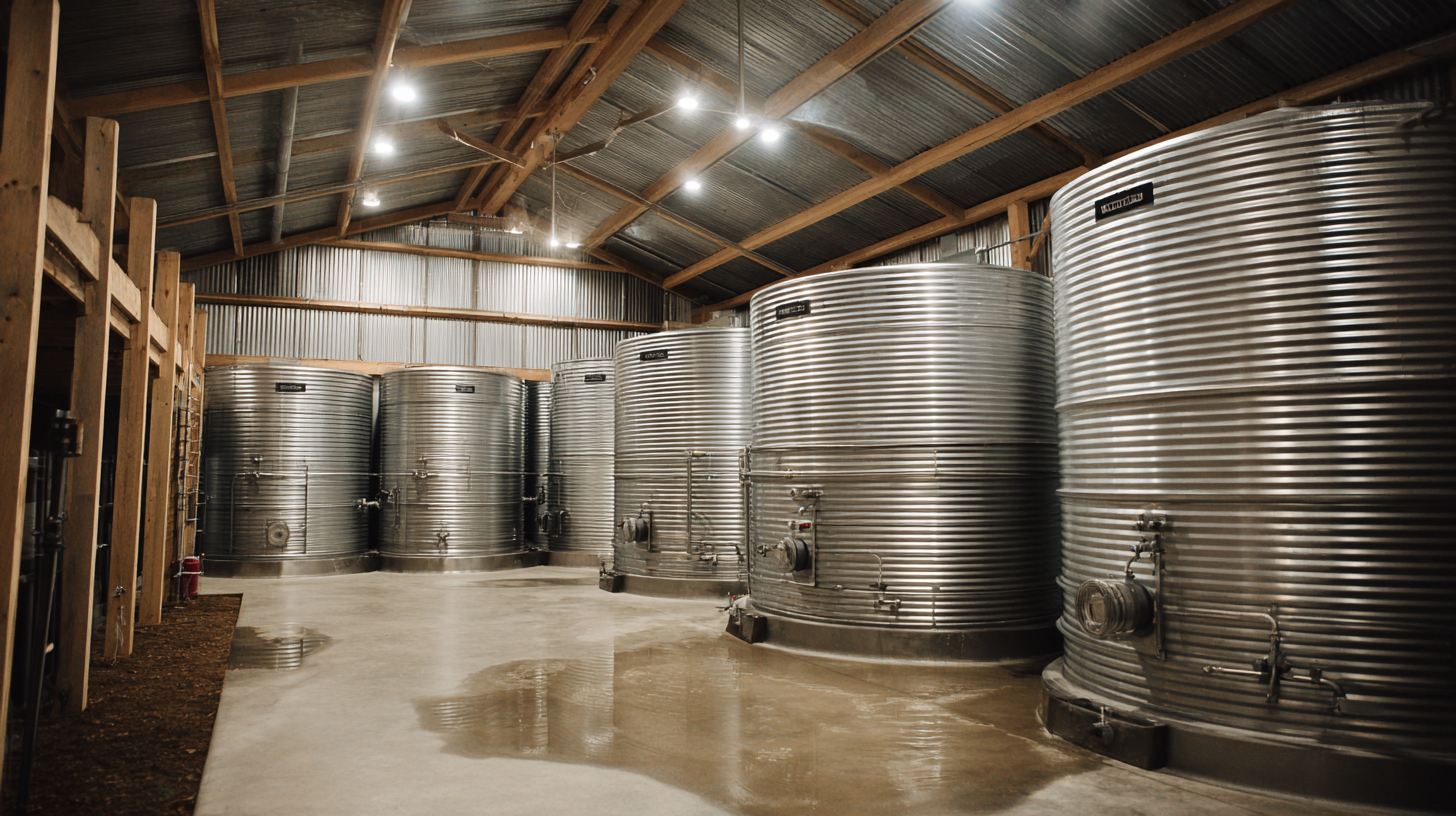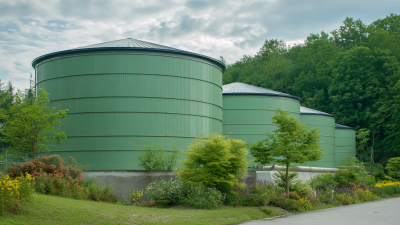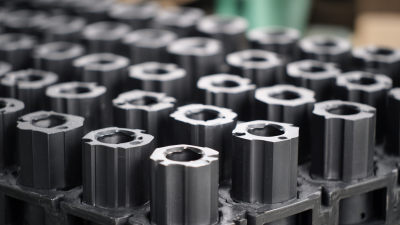In today's era of increasing water scarcity and environmental consciousness, selecting the right water storage tanks is crucial for maximizing water efficiency in residential settings. According to a report by the American Water Works Association, approximately 40% of the water supplied for residential use is lost due to inefficiencies in storage and distribution systems.

By investing in high-quality water storage tanks, homeowners can significantly reduce waste, ensuring that a reliable and sustainable supply of water is available, even during dry seasons. Additionally, research indicates that properly sized and maintained water storage tanks can lead to a reduction in household water consumption by up to 30%.
As the demand for effective water management continues to rise, understanding the various types, capacities, and materials of water storage tanks will ultimately empower homeowners to make informed decisions that not only conserve water but also contribute to long-term ecological sustainability.
When selecting water storage tanks for your home, several essential factors come into play to maximize water efficiency. First, consider the size of the tank. The capacity should align with your household’s water usage to avoid excess water waste. A tank that is too large may lead to stagnation, while a tank that is too small may require frequent refills, defeating the purpose of efficiency.

Another critical aspect is the material of the tank. Options like plastic, fiberglass, and steel each have their benefits and drawbacks. Plastic tanks are lightweight and resistant to corrosion, making them a common choice for residential use. In contrast, steel tanks offer durability and a longer lifespan but can be more prone to rust if not properly coated.
Tips: Always check for insulation features if you live in a region with extreme temperatures, as this can prevent water from freezing or overheating. Additionally, consider integrating a rainwater harvesting system, as it can complement your water storage and contribute to overall efficiency. Regularly inspect and maintain your tanks to ensure they are functioning optimally, which is key in maximizing your water efficiency.
When it comes to maximizing water efficiency in your home, understanding the various types of water storage tanks and their applications is crucial. Different tanks serve different purposes, from rainwater harvesting systems to potable water storage. For instance, polyethylene tanks are lightweight and resistant to rust and corrosion, making them ideal for outdoor installations. On the other hand, stainless steel tanks offer durability and are suitable for both aesthetic and functional uses, especially in urban settings.
Tips: When selecting a tank, consider factors such as the size of your household, available space, and intended use of the water. For example, if you're looking to collect rainwater for irrigation, a larger tank with a filtration system might be necessary. Conversely, if your main focus is on storing drinking water, opt for a tank specifically designed for potable water, as it will have features that prevent contamination.
Additionally, think about the tank's location and accessibility for maintenance. Above-ground tanks are easier to maintain and inspect, while underground tanks are often more discreet and can provide additional space above ground. Prioritizing these aspects will ensure you choose a water storage solution that aligns with your efficiency goals and enhances your home's water management system.

When selecting water storage tanks for your home, focusing on capacity, material, and durability is essential. Capacity dictates how much water you can store and should align with your household's needs. Consider your daily water consumption and plan for peak usage times. For families or homes in regions with water scarcity, larger tanks may be more beneficial.
Material is another critical feature. Tanks come in various materials, including plastic, fiberglass, and metal. Each material has its pros and cons; for instance, plastic tanks are lightweight and resistant to corrosion but might not withstand extreme temperatures as well as metal tanks. Fiberglass tanks offer a balance of durability and lightness, making them great for both above-ground and underground storage.
Durability goes hand-in-hand with the material choice. A durable tank will withstand environmental stress and require less frequent replacement. When choosing a tank, check for resistance to UV rays, rust, and general wear and tear.
Tip: Always consider local regulations when selecting a tank, as some areas have specific guidelines regarding size and materials. Ensure your tank also includes a warranty for added peace of mind.
| Feature | Description | Importance | Example Dimensions |
|---|---|---|---|
| Capacity | The amount of water the tank can hold, measured in gallons or liters. | Critical for determining how much water storage is needed for household use. | 500-10,000 gallons |
| Material | The substance used to construct the tank, such as plastic, steel, or fiberglass. | Affects durability, corrosion resistance, and overall lifespan of the tank. | Polyethylene, Stainless Steel, Fiberglass |
| Durability | The ability of the tank to withstand external and internal pressures. | Ensures the tank lasts longer with minimal maintenance requirements. | 10-30 years |
| Insulation | The tank's ability to maintain water temperature, particularly in extreme climates. | Helps in maintaining water quality and reduces energy costs. | R-Value 10-20 |
| Accessibility | Ease of access for maintenance and cleaning of the tank. | Critical for ensuring proper tank upkeep and longevity. | Top opening, Side access |
Understanding water consumption patterns is crucial for homeowners seeking to maximize efficiency and minimize waste. Research shows that effective water storage can reduce waste by as much as 30%. By analyzing daily water usage, homeowners can identify peak times and areas of excessive consumption. This insight allows for the strategic placement and sizing of water storage tanks, ensuring that water is readily available when needed and reducing the chance of overflow or evaporation losses.
Selecting the right water storage solution plays a vital role in this efficiency strategy. Tanks that are well-suited to the specific needs of a household can significantly lower the amount of water wasted. For instance, using tanks with appropriate capacity for irrigation, indoor use, and rainwater collection can lead to optimal water management. By prioritizing proper storage solutions, homeowners not only conserve water but also contribute to environmental sustainability, all while potentially reducing their utility bills.
Maintaining water storage tanks is crucial for ensuring their longevity and efficiency. According to the Water Research Foundation, proper tank maintenance can extend the lifespan of water storage systems by up to 20 years. Regular inspections and cleaning are vital; sediment buildup can not only decrease storage capacity but also lead to water quality issues. A proactive approach to maintenance involves checking for leaks, inspecting the tank's structure, and replacing any worn components.
Additionally, adopting best practices such as installing filtration systems can significantly enhance water quality and reduce the frequency of tank cleaning. A report by the American Water Works Association indicated that proper filtration can lower contaminants by up to 90%, thus minimizing the need for extensive tank maintenance. Seasonal checks and systematic assessments ensure that any potential problems are identified early, allowing homeowners to address issues swiftly and effectively, ultimately supporting a more sustainable water management approach.
This chart compares the water efficiency of different water storage tank materials. The efficiency is measured as a percentage, showing the effectiveness of each type in storing water without loss over time. Choosing the right material is crucial for optimizing water storage in your home.






